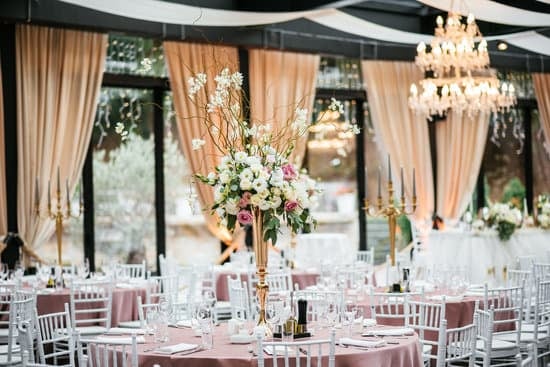Are you wondering “do you put plus one on wedding invitations?” The tradition of wedding invitations has long included the practice of providing a plus one for certain guests. This article will explore the etiquette and considerations around this tradition, offering guidance for both couples and their invited guests.
The purpose of the plus one on a wedding invitation is to extend an invitation for the guest to bring a date or partner to the wedding. This practice acknowledges that attending a wedding as a single guest can sometimes feel isolating, and offering a plus one provides an opportunity for guests to enjoy the celebration with someone special to them.
However, there are traditional etiquette rules and practical considerations that come into play when deciding who receives a plus one and how it should be communicated to guests.
Etiquette
The tradition of wedding invitations has long been steeped in etiquette and rules. One of the most common questions when it comes to wedding invitations is whether or not to include a plus one for guests. The decision often depends on traditional etiquette, as well as practical considerations and individual circumstances.
Traditional Etiquette
Traditionally, the rule of thumb for including a plus one on a wedding invitation is to extend this courtesy to guests who are in serious relationships or who are married. This means that if a guest is in a committed relationship, living with their partner, or engaged, they should be given the option to bring their significant other along to the wedding.
However, if a guest is single or casually dating someone, it may not be necessary to include a plus one on their invitation.
Who Gets a Plus One
When deciding who should receive a plus one on their wedding invitation, it’s important to consider the nature of the guest’s relationship status. As mentioned before, those who are in committed relationships or are married should receive this option. Additionally, close family members and bridal party members should almost always be given a plus one as well.
Couples Invitations
Some guests may wonder if couples’ invitations always warrant a plus one option. In general, couples who live together or are in serious relationships should have the option to bring their partner. However, it’s also acceptable for couples to be invited by name without an additional plus one designation if they are not in serious relationships.
As you consider these traditional etiquette guidelines surrounding wedding invitations and plus ones, keep in mind that there may be practical considerations that come into play as well. By understanding these principles alongside individual circumstances and modern-day norms, you can ensure that your wedding invitations reflect both proper etiquette and thoughtfulness towards your guests.
Who Gets a Plus One
When it comes to wedding invitations, one of the most common questions that arises is whether or not to include a “plus one” for your guests. The tradition of the plus one dates back many years and was originally intended to allow single guests to bring a date to the wedding. However, in modern times, the rules around who gets a plus one have become a bit more complicated.
Traditionally, married couples are always invited together and should not need an additional plus one on their invitation. Additionally, if someone is engaged or in a serious long-term relationship, it is considered polite to extend a plus one invitation to their partner. However, for single guests who are not in a serious relationship, whether or not they receive a plus one may depend on budget constraints and space limitations.
In some cases, practical considerations such as venue capacity and budget may limit the number of plus ones that can be extended. It is important for couples to carefully consider these factors when determining who should receive a plus one on their wedding invitations.
Clear communication with guests about the plus one policy can help avoid any confusion or hurt feelings. Ultimately, the decision about who gets a plus one should be made thoughtfully and should take into account both traditional etiquette and practical considerations.
| Category | Rules |
|---|---|
| Married Couples | Invited together without needing an additional plus one |
| Serious Relationships | If someone is engaged or in serious long-term relationship, it’s polite to extend a plus-one invitation |
| Single Guests | The decision may depend on budget constraints and space limitations |
Couples Invitations
When it comes to wedding invitations, the question of whether couples should always receive a plus one can be a tricky one to navigate. While traditionally, couples who are in committed relationships or married should receive a joint invitation, there are some practical considerations and etiquette guidelines to keep in mind.
Etiquette around wedding invitations can vary depending on cultural norms and personal preferences, but generally speaking, couples who are in long-term relationships or married should be extended a joint invitation. This shows respect for their relationship and allows them to share in the celebration of love and commitment.
However, there may be instances where it’s not feasible to extend a plus one to every couple. Budget constraints, venue size limitations, or simply wanting an intimate gathering may mean that not all couples will receive a plus one. In these cases, it’s important to communicate openly and honestly with your guests about the reason for not extending a plus one.
Ultimately, when deciding whether couples should always receive a plus one on wedding invitations, it’s essential to consider both etiquette guidelines and practical considerations. While it’s ideal to extend a plus one to all couples, there may be valid reasons for not doing so. Communication with your guests about your decision is key to ensuring that everyone feels respected and valued.
Single Guests
Understanding the Tradition
Traditionally, single guests who are not in a committed relationship may not receive a plus one on a wedding invitation. This can be attributed to the cost and space limitations that often come with wedding planning. It is important for single guests to understand that this is not a personal slight, but rather a practical decision made by the couple getting married.
Respecting the Couple’s Decision
If you receive a wedding invitation without a plus one, it is essential to respect the couple’s decision. While it may be disappointing to attend the wedding without a date, remember that weddings are about celebrating the love and commitment of the couple getting married. By respecting their guest list choices, you are showing support and understanding for their special day.
Navigating Wedding Social Situations
For single guests attending a wedding without a plus one, it can sometimes feel daunting to navigate social situations such as sitting at a table with other guests who may know each other. However, weddings are great opportunities to meet new people and celebrate with friends and family. Embrace the chance to make new connections and enjoy the festivities despite attending solo. Remember, weddings are joyful occasions meant for celebrating love and unity, regardless of relationship status.
Practical Considerations
When deciding whether to include a plus one on wedding invitations, practical considerations can play a significant role in the decision-making process. While etiquette and tradition often dictate who should receive a plus one, practical factors may also influence the decision. Here are some practical reasons for including or not including a plus one on wedding invitations:
- Venue Capacity: One of the most practical reasons for not including a plus one on wedding invitations is limited venue capacity. If the wedding venue has strict capacity restrictions, couples may opt to invite only those named on the invitation to ensure that they can accommodate all guests.
- Budget Constraints: Another common practical consideration is budget constraints. Weddings can be expensive affairs, and accommodating extra guests means additional costs for food, beverages, and other wedding expenses. In such cases, couples may choose to limit plus ones to close family members or long-term partners to stay within their budget.
- Guest List Size: For couples with large families or extensive social circles, managing a guest list can be challenging. Including plus ones for every guest could significantly increase the size of the wedding, which may not be feasible for the couple or their chosen venue.
Ultimately, couples must weigh these practical considerations alongside traditional etiquette when determining who should receive a plus one on their wedding invitations. Clear communication about the policy regarding plus ones can also help manage guest expectations and avoid any misunderstandings.
Considering these practical reasons alongside etiquette guidelines can aid couples in making informed decisions about whether to include a plus one on their wedding invitations.
Communication
When it comes to wedding invitations, communicating the plus one policy to guests is a crucial aspect of ensuring that everyone understands the guidelines and avoids any potential misunderstandings. Whether you are inviting single guests, couples, or families, it’s important to clearly communicate who is eligible for a plus one and who is not. This can help prevent any awkward conversations or uncomfortable situations later on.
One of the most effective ways to communicate the plus one policy to guests is through the use of inner and outer envelopes. The inner envelope should specify exactly who is invited, while the outer envelope should include the names of all those invited. This can help clarify whether a plus one is extended to a single guest or if only specific individuals are included in the invitation.
In addition to using inner and outer envelopes, including a separate insert with the invitation that outlines the plus one policy can also be helpful. This insert can politely explain who is eligible for a plus one and provide any additional details about bringing a guest. By proactively addressing this in the invitation package, you can avoid any potential confusion or misunderstandings among your guests.
| Method | Description |
|---|---|
| Inner and Outer Envelopes | The use of both envelopes helps clarify who is invited. |
| Insert with Invitation | An additional insert outlining the plus one policy can prevent confusion. |
Conclusion
In conclusion, the topic of whether or not to include a plus one on wedding invitations is a decision that should be made thoughtfully and with respect for both traditional etiquette and practical considerations. While it is important to adhere to traditional etiquette when determining who should receive a plus one, it is also crucial to consider the individual circumstances of each guest. Ultimately, the goal is to make all guests feel welcome and comfortable at the wedding celebration.
When deciding who gets a plus one, it’s important to consider the relationship status of each guest, as well as any practical limitations such as budget constraints or limited venue capacity. Communicating the plus one policy clearly and politely can help alleviate any potential confusion or hurt feelings. Guests who do not receive a plus one should understand that this decision is often made out of necessity rather than exclusion.
While there are general guidelines for offering plus ones on wedding invitations, every situation is unique. It’s important for couples to approach this decision with sensitivity and understanding. By considering both traditional etiquette and practical considerations, couples can navigate the issue of plus ones on wedding invitations with grace and thoughtfulness. So in answer to “do you put plus one on wedding invitations“, it ultimately depends on individual circumstances and understanding the delicate balance between tradition and practicality.
Frequently Asked Questions
Should Wedding Invite Include Plus One?
Whether a wedding invite should include a plus one depends on the couple’s preferences and budget. If they are allowing single guests to bring a date, then including a “plus one” on the invitation is appropriate.
How Do You Address a Wedding Invitation With a Plus One?
When addressing a wedding invitation with a plus one, it’s important to include the name of the invited guest along with “and Guest” on the envelope. This clearly indicates that the recipient is allowed to bring a plus one.
How Do You Tell Wedding Guests They Have a Plus One?
The best way to inform wedding guests that they have a plus one is by addressing the envelope to them and their guest’s name, or simply mentioning it in the invitation. Alternatively, they can personally inform their guests about this allowance when sending out the invitations.

I have been involved in marriages for over 20 years helping couples and singles understand more about them.





